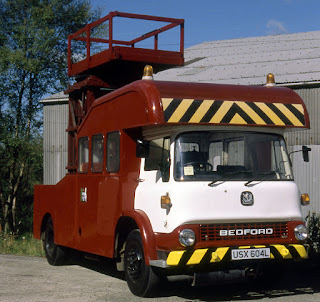Friom Dunfermline, we head south to the railway junction at Inverkeithing. LNER 9778 is seen banking a freight to the north of the town in 1936.
LNER 9245 arrives at Inverkeithing from the Dunfermline direction.
An old Wallasey Leyland bus is seen with a contractor, parked at Inverkeithing station in 1962 (Les Flint).
From nearby North Queensferry there are fine views of the Forth Bridge.
North British Railway 4-4-0 No. 98 is seen on the north (Fife) side of the Forth Bridge.
We're not, however, crossing the Firth of Forth just yet, as we're heading west, in time to see HMS Crscent entering Rosyth Dockyard in 1916
Just beyond Rosyth was the end of a short NBR branch, at Charlestown station.
Just inland is Cairneyhill, where Rennies Coaches kept their buses.
Another Rennies 'decker passes by the depot in 1981.
Now we cross the Forth, by the Kincardine Bridge.
That brings us to the Caledonian Railway station at Larbert.
To the east are the Kelpies (Creative Commons License).
As we approach Falkirk, we meet that town's trams crossing the canal at Bainsford.
Falkirk tram no. 12 on Graham Road.
Alexanders built bus bodies in Falkirk and newly constructed coulld often be found here ready for delivery. Here's a United Counties 'T' type ready for dispatch in 1976.
Midland Scottish was the main operator in Falkirk.
Clydeside (and other Scottish Bus operators) also ran into Falkirk.
Bryans of Denny ran a tendered service in the town.
Falkirk High station is on the main Edinburgh to Glasgow line. 5409 is propelling a service out of the station in 1971.
Outside Falkirk High station is the Woodside Inn.
Falkirk's other station is called Grahamston. 158711 calls.
Close to Grahamston station was the depot of the Scottish Railway Preservation Society. In August 1971 the resident Peckett 0-4-0ST "Bear" was photographed about to depart for Kent (Alan James).
Here are a few more photos at the SRPS depot in the 1970s. The society has since relocated to Bo'ness.
A former bra factory nearby became a two storey pub called Behind the Wall. It also contained Eglesbrech Brewery, though that has since closed. The pub remains in business and has a range of real ale upstairs.
Finally, we come to the excellent Wheatsheaf.
That's a good place to finish this post. The next one will find us heading west. Here's the map of the route so far.






























































